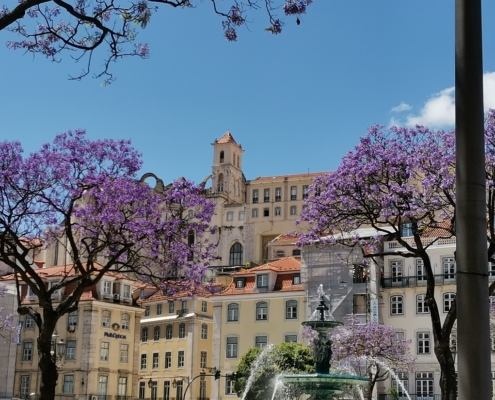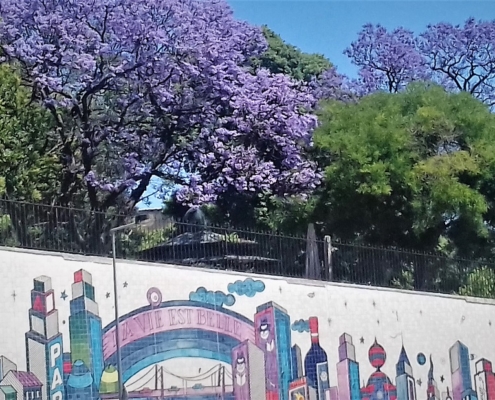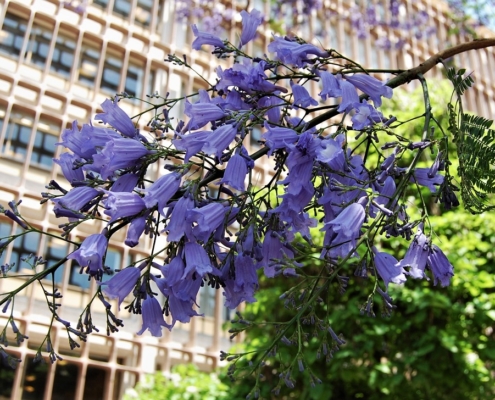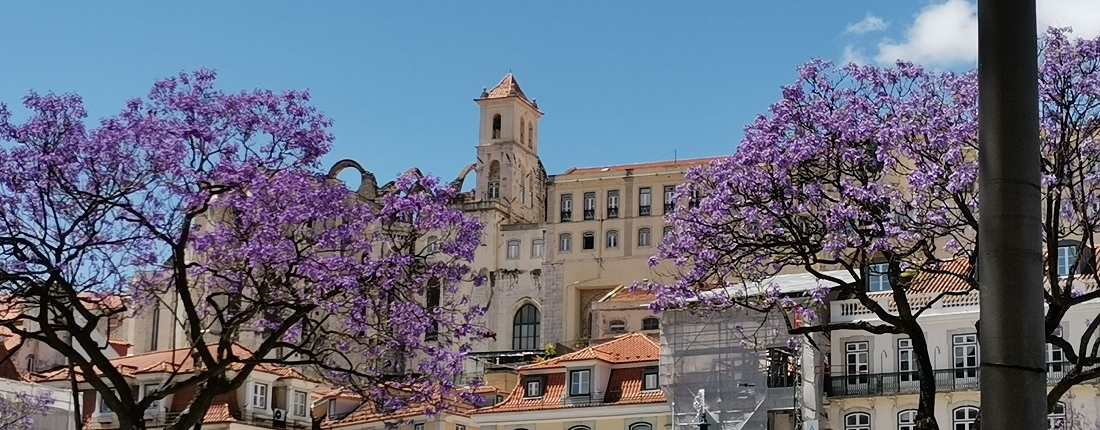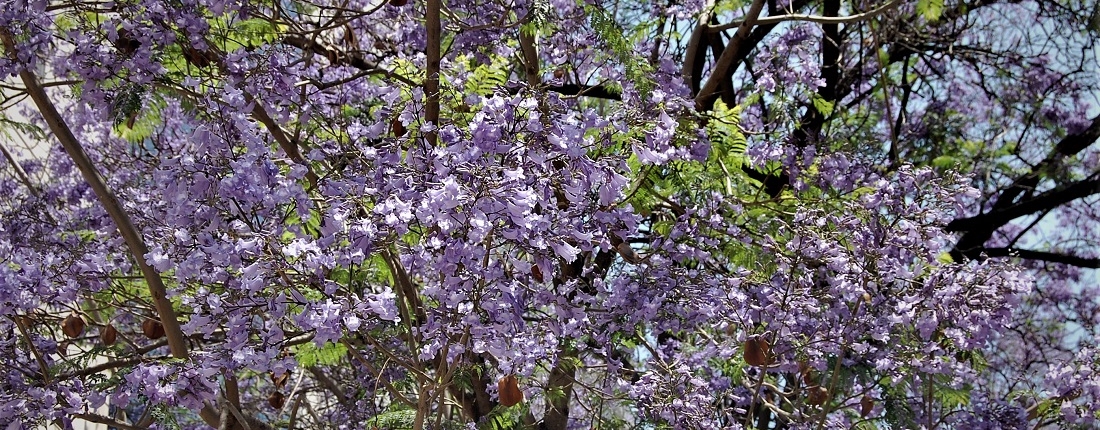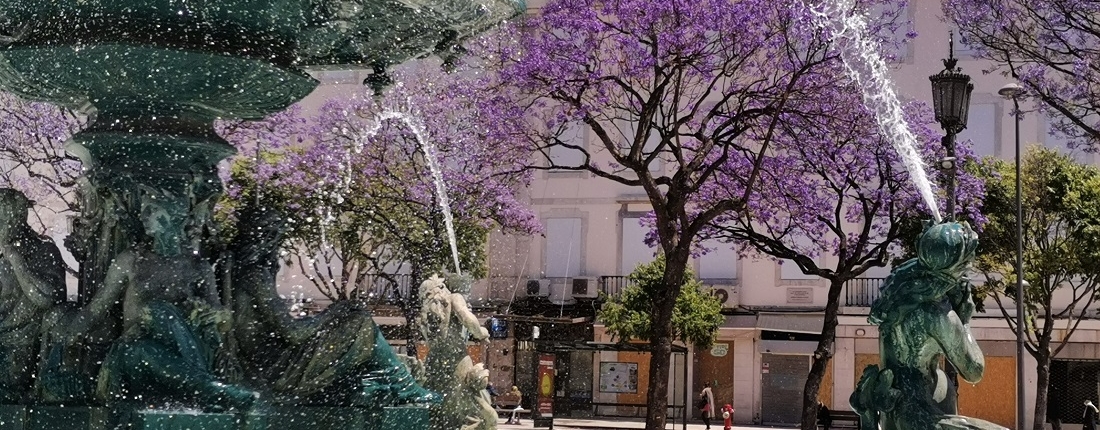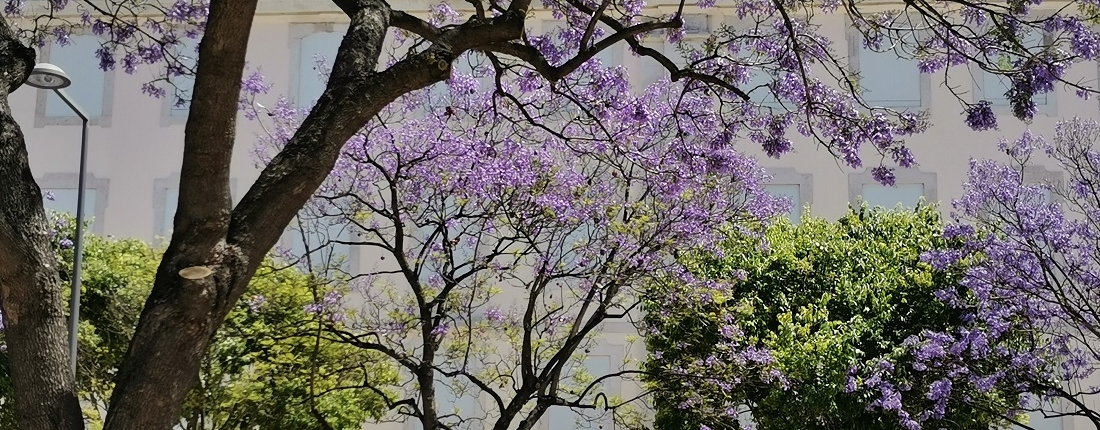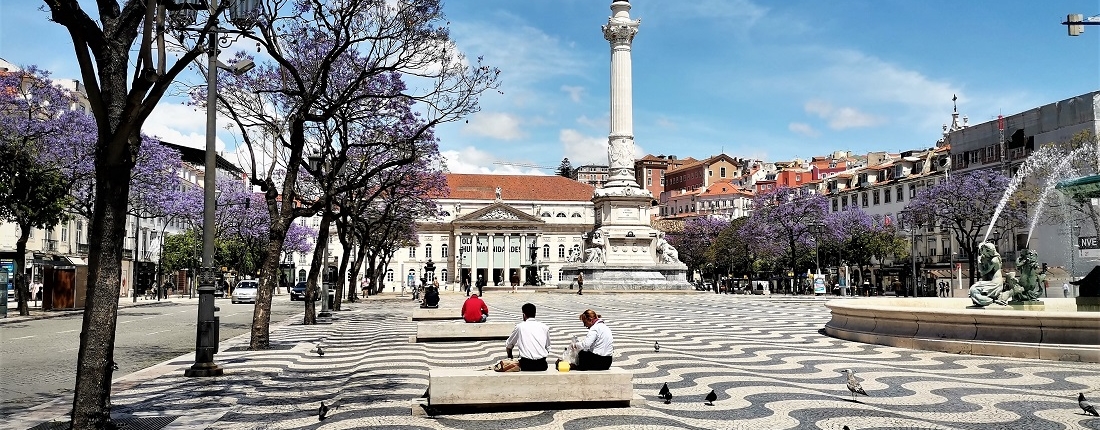Jacaranda. At the end of spring Lisbon is covered in an exuberant adornment in nuances of mauve and purple blue.
This explosion of colour is due to the jacarandas that bloom in May-June.
And it looks like the city is covered with a slightly psychedelic painting.
In Lisbon it is a pride: it is the only capital city to be shaded by these azure covers.
The jacaranda is one of the many species of trees that the Portuguese were able to acclimatize after their travels of maritime discovery. The Portuguese these great navigators had introduced many unknown species. They came from Brazil, India and Africa. However, the inquisition had dampened their botanical enthusiasm. It had decreed that it was a satanic practice.
Finally in 1768, the Botanical Garden of Ajuda (Belém) will allow Portugal to join the Western countries promoting the science and beauty of plants. And it was precisely there, in this delightful outlying garden, that the first Lisbon jacaranda was planted. Thanks to Félix de Avelar Brotero. The garden is over 200 years old,
The natives, the tupi-garanis, called it “the perfumed one” (jacaranda) when it was in flower. But it became “monkey clapping” when its fruits rattled in the wind like castanets.
In fact, the tree is not of much interest to merchant sailors. It cannot be used for marine carpentry, nor for its essence from which no perfume can be extracted. However, it will be used to make small wooden objects useful for navigation, and will be called “false pallisandre”. In fact, the jacaranda would later become the beautiful ornament that could be admired in the streets of Lisbon.
Translated with www.DeepL.com/Translator (free version)
In its natural habitat in Brazil, Argentina and Bolivia it is threatened.
However, it makes you want to admire the beautiful tree. The mysterious jacaranda casts a bluish shadow in the streets of the Portuguese capital. To be seen on Av Dom Carlos, Castilho street, Almirante Barroso street, Rossio square. Without forgetting the Botto Machado garden in Santa Clara (St Vincent) and many other places.
To know more about the discoveries and plants and about the history of Portugal
Lisbon-affinities recommends you the books of the writer Olivier Ikor: Caravelles, the golden century of Portuguese navigators, edited by Lattès, 2010, La Fabuleuse odyssée des plantes, Lattès, 2003, with Lucile Allorge.
and for more information see the article on jacarandas in Geo special trees.

